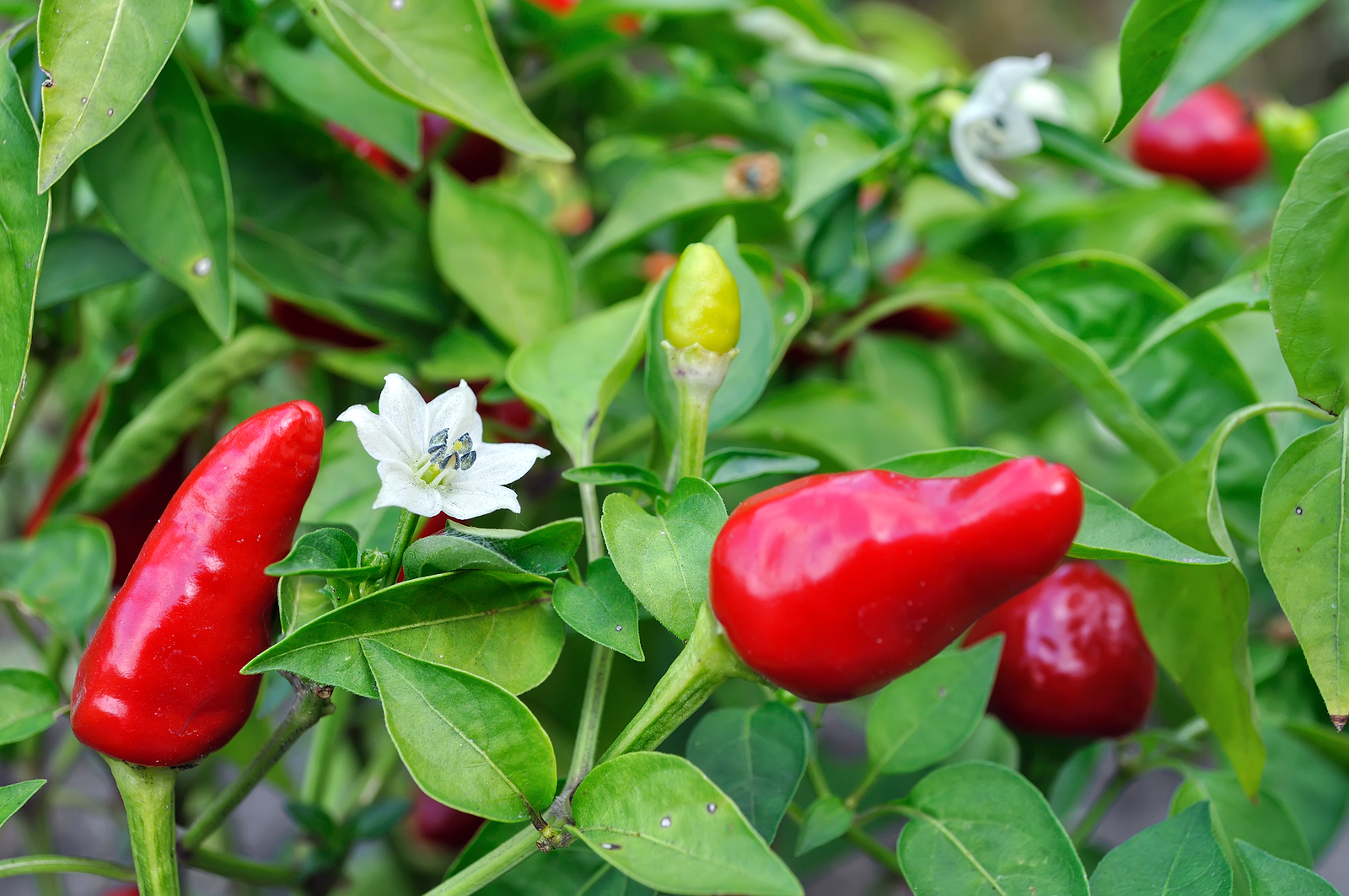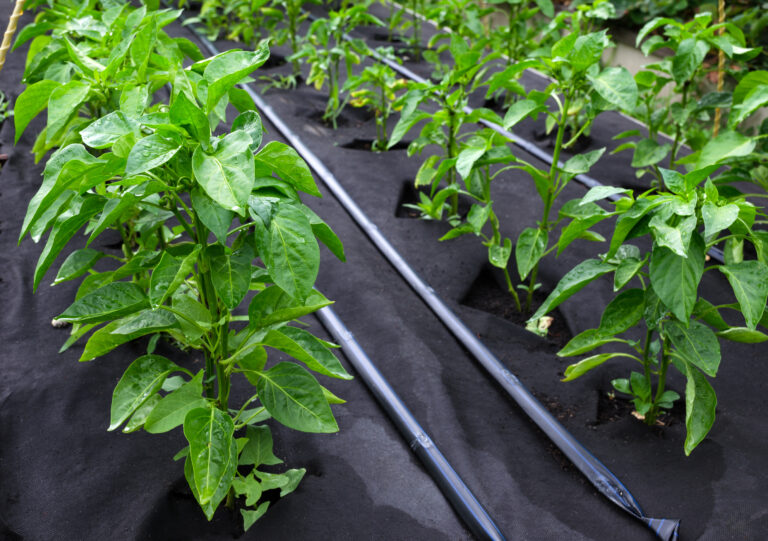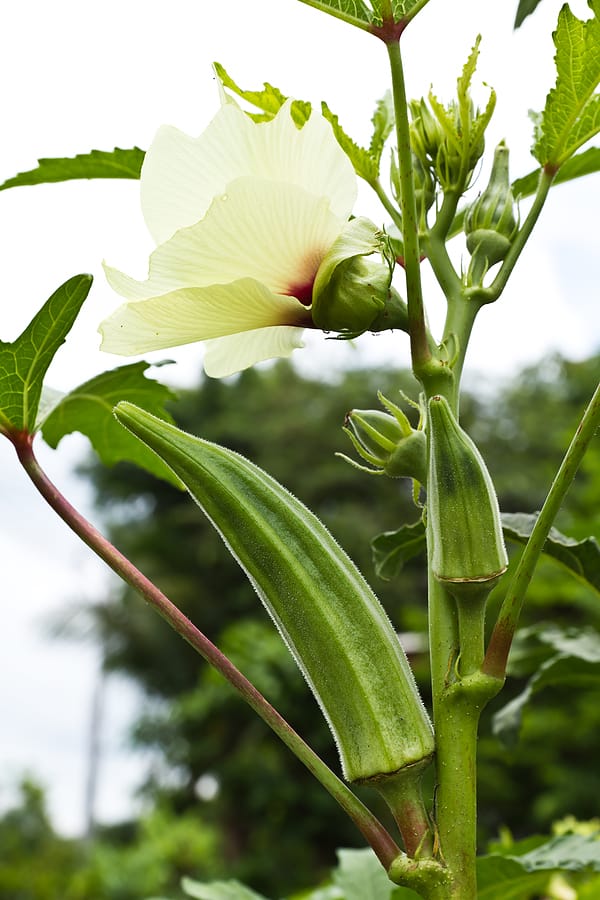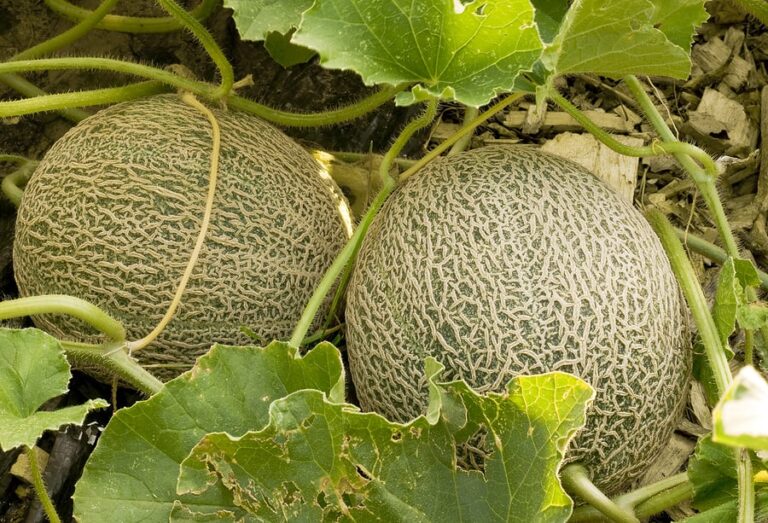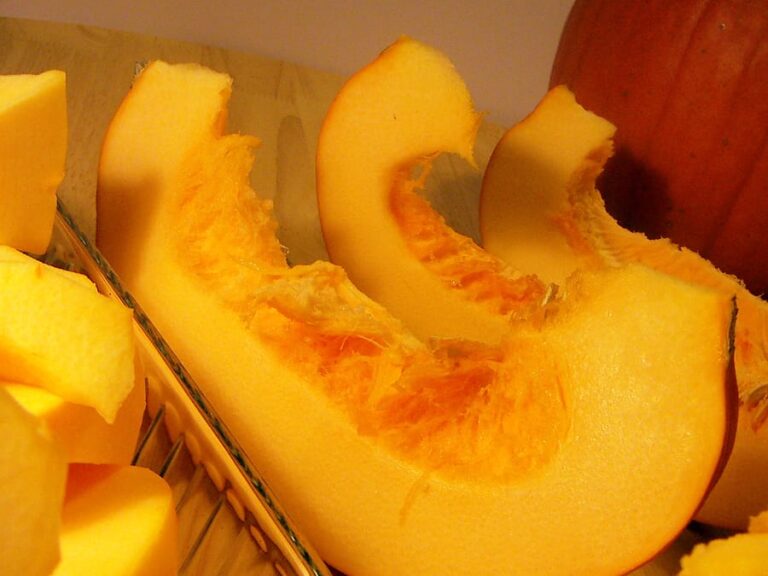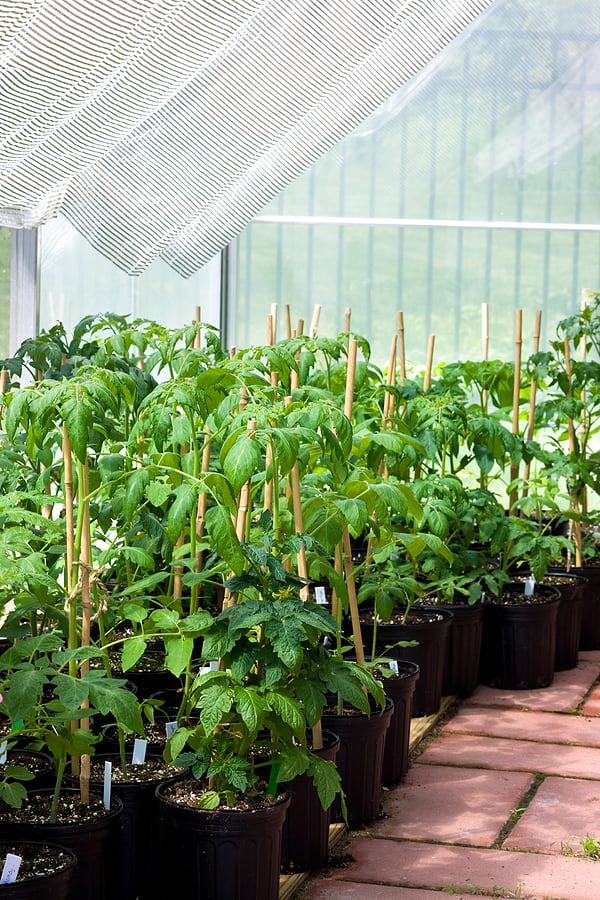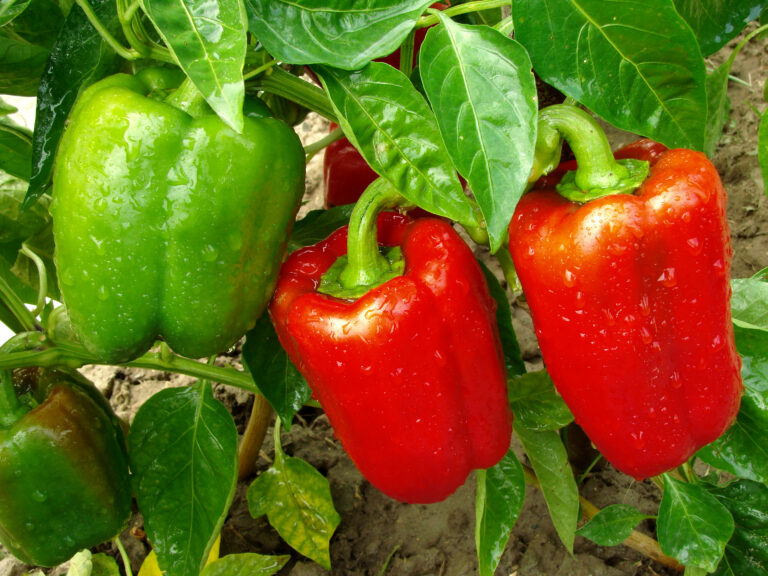Best Hot Pepper Varieties to Grow for Salsas, Sauces, and Drying
Growing hot peppers is one of the most rewarding experiences for home gardeners and spice enthusiasts. There’s nothing quite like picking fresh, homegrown peppers and using them to create salsas, sauces, and spice blends that are bursting with flavor. Hot peppers offer an incredible range of heat levels and taste profiles, from mild and smoky to fiery and intense. Whether you’re looking to add just a hint of spice or bring the heat to your favorite dishes, choosing the right pepper varieties makes all the difference.
Over the years, I’ve experimented with dozens of hot pepper varieties, searching for the perfect ones to use in fresh salsas, homemade hot sauces, and drying for long-term storage. Some peppers offer the ideal balance of heat and sweetness for fresh use, while others develop deeper flavors when fermented into sauces or dried into powders. Through trial and error, I’ve learned which varieties thrive in the garden and which ones consistently deliver the best results in the kitchen.
The best hot peppers for these purposes not only pack heat but also deliver rich flavors that enhance any dish. Whether you prefer the mild zing of a jalapeño or the extreme spice of a Carolina Reaper, this guide will help you choose the right peppers to grow. Based on my personal experience and expert gardening insights, here are the best hot peppers to cultivate for salsas, sauces, and drying.
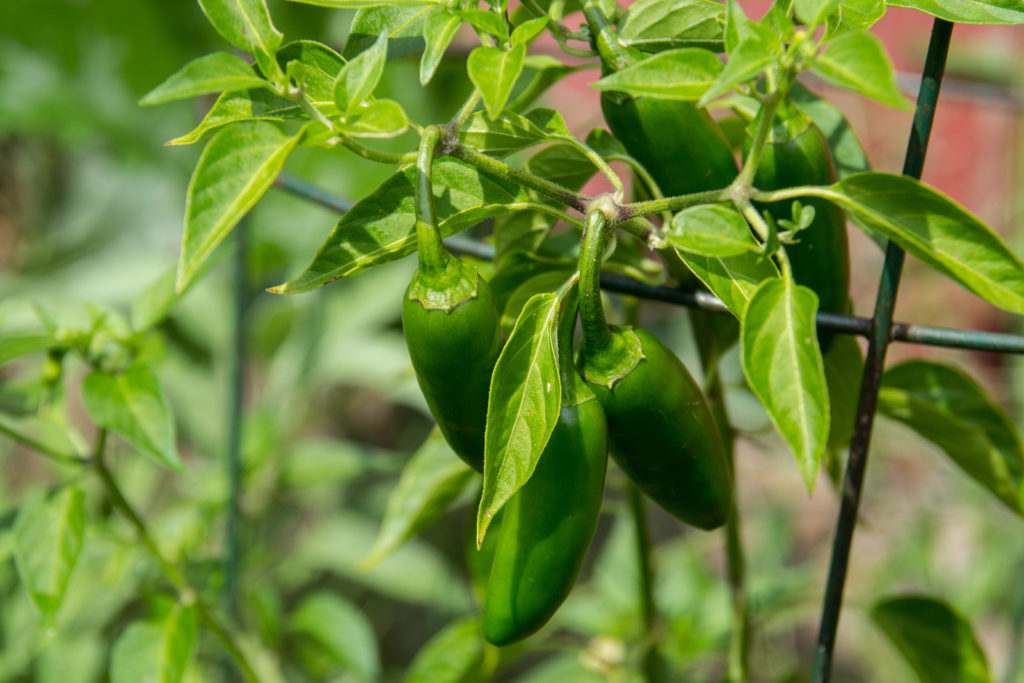
Best Hot Peppers for Salsas
When making fresh salsa, you want peppers that provide a balance of heat, flavor, and texture. The best salsa peppers add just the right amount of spice without overpowering the natural sweetness of tomatoes, onions, and herbs.
1. Jalapeño
- Heat Level: Mild to medium (2,500–8,000 Scoville Heat Units)
- Why It’s Great for Salsa: Jalapeños are the go-to pepper for classic salsas. They provide a mild to moderate heat level with a slightly grassy and bright flavor. Pick them green for a fresh, crisp taste or allow them to ripen to red for a slightly sweeter and hotter kick.
2. Serrano
- Heat Level: Medium (10,000–23,000 SHU)
- Why It’s Great for Salsa: Serranos are spicier than jalapeños but still offer a crisp texture that holds up well in fresh salsas. They have a slightly citrusy undertone, which pairs well with tomatoes and lime juice.
3. Fresno
- Heat Level: Mild to medium (2,500–10,000 SHU)
- Why It’s Great for Salsa: Fresnos look similar to red jalapeños but have a fruitier and slightly smokier flavor. Their bright red color enhances salsa visually and adds a rich depth of flavor.
4. Hungarian Wax
- Heat Level: Mild to hot (5,000–15,000 SHU)
- Why It’s Great for Salsa: This pepper has a tangy, slightly sweet heat that works well in both fresh and cooked salsas. It’s great for adding a zesty punch without being overwhelming.
Best Hot Peppers for Hot Sauces
Hot sauces require peppers that not only bring the heat but also contribute complex flavors. Some peppers are ideal for vinegar-based sauces, while others shine in fermented or smoky sauces.
1. Habanero
- Heat Level: Very hot (100,000–350,000 SHU)
- Why It’s Great for Hot Sauce: Habaneros have an unmistakable fruity and citrusy flavor that creates a well-rounded hot sauce. Their natural sweetness pairs well with tropical fruits like mango and pineapple in homemade hot sauce recipes.
2. Cayenne
- Heat Level: Medium to hot (30,000–50,000 SHU)
- Why It’s Great for Hot Sauce: Cayenne peppers are the backbone of many commercial hot sauces. They blend smoothly into sauces, offering a balanced heat level that doesn’t overpower the other ingredients.
3. Thai Chili
- Heat Level: Hot (50,000–100,000 SHU)
- Why It’s Great for Hot Sauce: Thai chilies provide a sharp, intense heat that’s perfect for Asian-style hot sauces. They work well in garlic-based sauces and add a fiery kick to any dish.
4. Ghost Pepper (Bhut Jolokia)
- Heat Level: Extremely hot (800,000–1,041,427 SHU)
- Why It’s Great for Hot Sauce: If you love extreme heat, ghost peppers are a must-grow. Their slow-building burn makes for a unique hot sauce experience, and their slightly smoky, fruity flavor pairs well with bold ingredients like roasted garlic and vinegar.
5. Carolina Reaper
- Heat Level: Insanely hot (1,400,000–2,200,000 SHU)
- Why It’s Great for Hot Sauce: Carolina Reapers are known for their intense heat and a surprising touch of sweetness. A little goes a long way, making them ideal for ultra-spicy sauces with a balanced complexity.
Best Hot Peppers for Drying
Drying hot peppers allows you to store them for long-term use and create flavorful chili powders and flakes. The best peppers for drying have thin walls and rich flavors that intensify as they dry.
1. Cayenne
- Heat Level: Medium to hot (30,000–50,000 SHU)
- Why It’s Great for Drying: Cayenne peppers dry quickly and grind easily into a fine powder, making them perfect for homemade chili flakes and cayenne powder.
2. Thai Chili
- Heat Level: Hot (50,000–100,000 SHU)
- Why It’s Great for Drying: These small, potent peppers dry well and add an intense heat to dishes. They’re excellent for making crushed chili flakes for Thai and Indian cuisine.
3. Ancho (Dried Poblano)
- Heat Level: Mild (1,000–2,000 SHU)
- Why It’s Great for Drying: Anchos are dried poblano peppers with a sweet, smoky flavor. They are widely used in Mexican mole sauces and chili blends.
4. Pasilla
- Heat Level: Mild to medium (1,000–4,000 SHU)
- Why It’s Great for Drying: Pasilla peppers have a rich, raisin-like flavor that enhances mole sauces and Mexican dishes.
5. Chile de Árbol
- Heat Level: Hot (15,000–30,000 SHU)
- Why It’s Great for Drying: This pepper retains its bright red color and has a nutty, smoky heat, making it a great addition to chili powders and spice blends.
Tips for Growing Hot Peppers Successfully
- Choose the Right Soil: Hot peppers thrive in well-draining soil rich in organic matter.
- Provide Plenty of Sunlight: At least 6–8 hours of direct sunlight is ideal.
- Water Consistently: Keep the soil evenly moist but avoid overwatering to prevent root rot.
- Harvest at Peak Ripeness: Peppers become hotter as they mature, so waiting for full color development ensures the best flavor and spice level.
Why Hot Peppers Are Hot
Slice open a hot pepper and you will see tiny blisterlike sacs on the inner wall of the pepper. These sacs contain capsaicinoids or organic chemicals. Capsaicinoids make peppers hot.
The more sacs you see on the inside of a pepper the hotter the pepper will be. When a pepper is cut or handled roughly the sacs break and splash onto the pepper’s seeds and inner walls. That’s when you taste the hotness of a pepper.
The best-known capsaicinoid is capsaicin. Capsaicin is so potent that the average person can detect its presence even when it is diluted in water to 10 parts per million.
How Hot Pepper Heat is Measured
The hotness or pungency of a pepper is measured in Scoville Heat Units (SHU). American pharmacologist Wilbur Scoville invented this scale in 1912; it is basically a taste test. Scoville asked five people to taste diluted capsaicinoids from peppers; if the tasters could still taste the hotness of a pepper when 1 part of the pepper was diluted with say 10,000 parts water, then that pepper would be rated 10,000 on the SHU. A habañero pepper is rated up to 500,000 SHU.
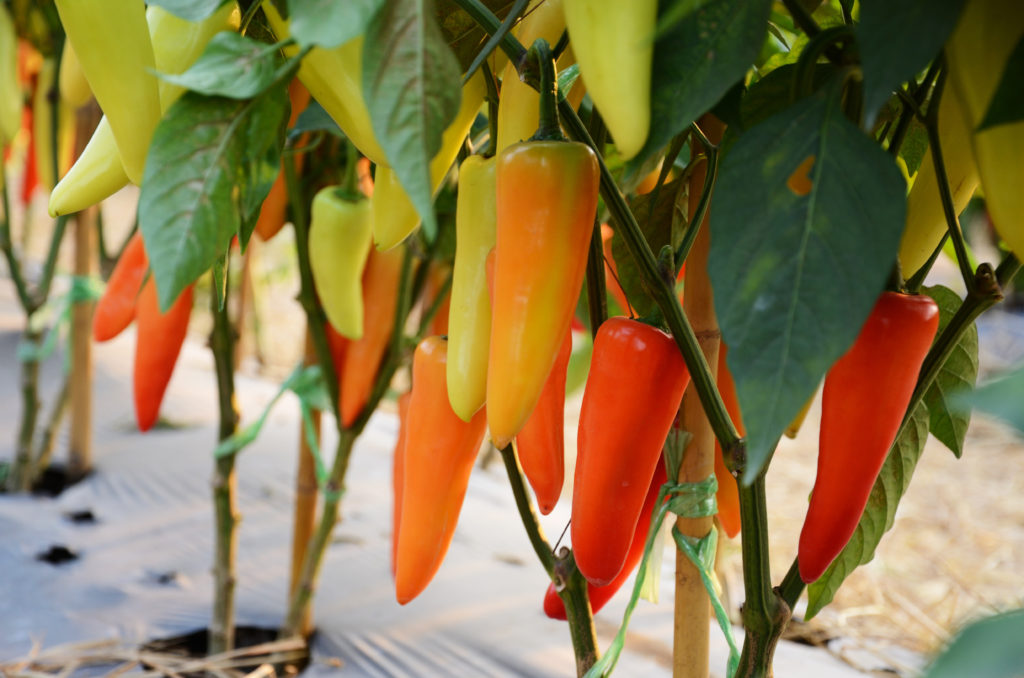
More Hot Pepper Varieties to Grow
Here are hot peppers–also called chili peppers–you can grow in the garden:
Mildly hot peppers (from 100 to 2,500 SHU)
- Anaheim. Mild to moderately hot. Long, tapered, pointed fruit; 7 to 8 inches long, 1 inch wide. Light green turning crimson red when ripe; medium to thick-walled. Use for stuffing when red. The plant grows to 30 inches.
- Ancho (called Poblano when picked green). Mildly pungent to hot (1,000-1,500 SHU). Large, conical fruit to 5 inches long, to nearly 4 inches wide; dark green turning red when ripe. Use in chili rellenos. The plant grows to 36 inches tall.
- Big Jim. Medium hot (500-1,000 SHU). Large to very large fruit to 9 inches long, 2 inches wide at should tapers to blunt end; medium-green turning red when ripe. Use fresh, dried, or canned.
- Hungarian Yellow Wax (also called Hungarian Long Wax). Very pungent. Slightly tapered fruit to 7 inches long, 1½ inches in diameter. Waxy yellow turning red at maturity; medium thick-walled. For canning and pickling. Upright plant to 24 inches. 62 days. Open-pollinated.
- Italian White Wax. Mild when young, very pungent at maturity. Tapered, point fruit to 3 inches long ½ inch in diameter; pale yellow turning red at maturity. Upright plant to 40 inches tall. Open-pollinated.
- Caloro. Pungent. Similar to Santa Fe Grande. Compact plant to 24 inches tall. Prolific fruit. Widely adapted and grows in difficult climates. Good for containers. Pickle or use as a sandwich garnish or as an appetizer.
- Mexi Belle. Mildly hot, pungent ribs (100-500 SHU). Bell pepper shape, medium-sized 3 to 4 lobes; medium green turning red when ripe; thick walls. Compact plant 14 to 30 inches high. Will produce 10 to 20 pods. Widely adapted. All America Selection. Matures in 70 days. Stuff or add to stir-fries.
- Mulatto. Pungent. Pods are 4 to 6 inches long, and 3 inches wide tapering to a blunt end. The plant grows to 36 inches tall. Matures to dark chocolate brown. Set fruit best in cool temperatures. Stuff like ancho or used dry to make mole sauce.
- New Mexico #6. Mildly hot and flavorful. Anaheim type. Tapered fruit to 6 inches long, 1½ inches in diameter; green turning red when ripe. Use for chili rellenos when green; popular for drying. The plant grows to 30 inches tall.
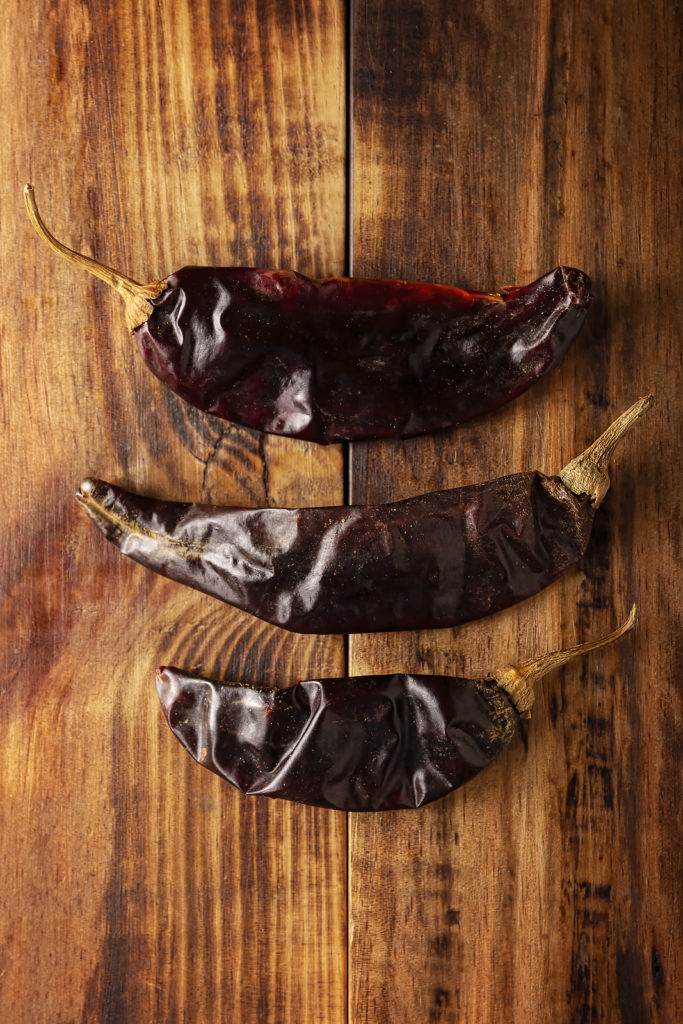
Medium hot peppers (from 2,500 to 5,000 SHU)
- Ancho 101. Mildly pungent (1,000-1,500 SHU). Heart-shaped, pointed, from 3 to 6 inches long, thin-walled; dark green turning red at maturity. Grows best where the weather is in the 70°sF. This tall plant may require staking. Use for chiles rellenos.
- Cascabel. Moderately pungent, spicy flavor (1,500-2,500). Cherry-type, spherical, shiny fruit to 1 inch in diameter; dark green turning deep red at maturity; medium thin walls. The plant grows to 36 inches tall. Grows well in moderate climates. Pods rattle when dry. Grind dry pods into powder to flavor fish and shrimp.
- Guajillo. Biting hot. Large, tapered fruit to 5½ inches long to 1 inch in diameter; turns translucent red when ripe; thin-walled. The plant grows to 36 inches tall. Good for drying. 58 to 90 days to maturity. Has a fruity flavor; used in red enchilada sauce.
- Hungarian Rainbow Wax. Semi-hot flavor. Blocky, thick-fleshed fruit with 3 to 4 lobes; light yellow to a rainbow of sunset colors to red when fully ripe. Use for relishes and salsas. 62 days to maturity.
- Hungarian Wax. Medium hot. Pods are 6 to 8 inches long; bright red at maturity. The plant grows to 24 inches tall. 70 days to maturity.
- NuMex Mirasol. (2,500-5,000 SHU). Pods are 3 to 4 inches long ½ to ¾ inches wide; grow to 24 inches tall with multiple stems and branches and clusters of fruit at the end of each branch. 90 days to maturity. Used in dry, red form as a chile powder.
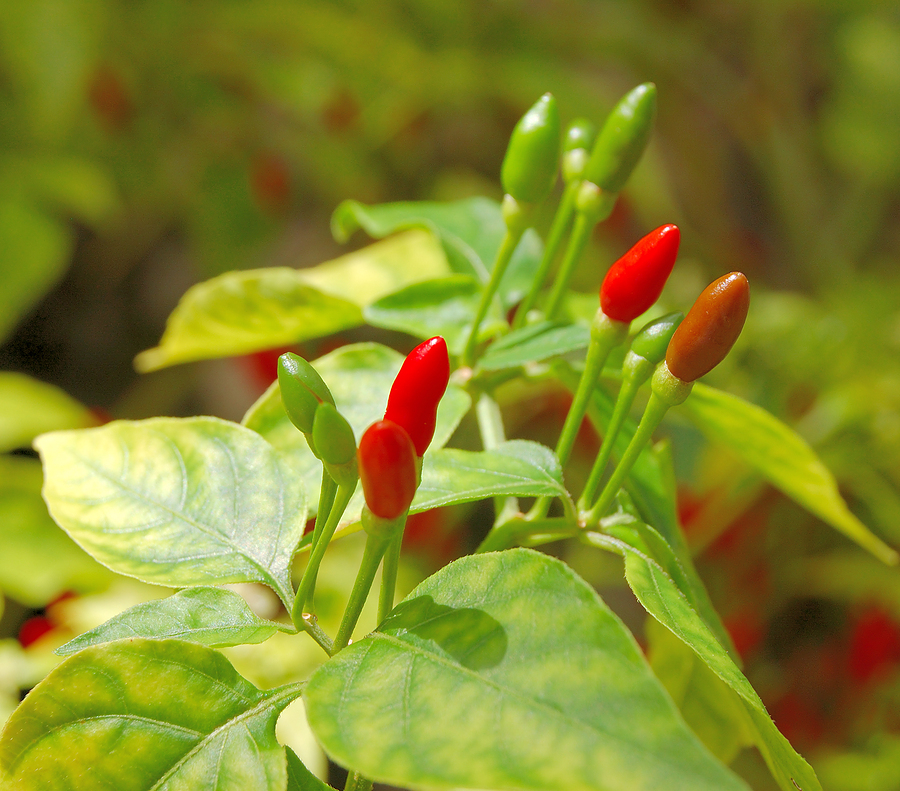
Fiery hot peppers (from 5,000 to 500,000 SHU)
- Aji. Very hot (5,000-15,000 SHU). Pods 3 to 5 inches long; orange-red at maturity. Use in sauces and stews.
- Bhut jolokia. (1 million SHU). Also known as ghost pepper, is said to be the hottest chili pepper in the world.
- Dr. Greenleaf Red Hot Tabasco. Very pungent (5,000-15,000 SHU). Heavy cropping, virus resistant. 120 days to maturity.
- Fresno Grande. Very pungent. Improved Fresno type; small, conical fruit tapering to a point, to 3 inches long; medium green turning to bright red when ripe; medium thick-walled. The plant grows to 24 inches tall.
- Habañero. Hottest pepper (100,000-500,000 SHU). Square to heart-shaped fruit, often wrinkled, to 2½ inches long, 1 inch wide; light-green turning orange or red at maturity. Requires a long, hot, humid growing season. Use fresh in salsas or fermented to make hot sauce.
- Jalapeño. Very pungent (5,000-15,000). Sausage-shaped fruit tapering to a blunt end, about 3 inches long, 1½ inches in diameter; deep-green turning bright red when ripe; medium-thick walls. 75 days to maturity. Use as a spice and condiment, as an ingredient in salsa.
- Large Red Thick (Charleston Cayenne). Spicy; hotter than Jalapeno. Pods are 5 to 10 inches long, ½ to 1 inch wide, and crescent, or irregular in shape. Large Red Thick is grown in the West; Charleston Cayenne is grown in the Southeast. Often ground into flakes for pizza.
- Long Red Slim Cayenne. Very pungent. Long, slender fruit tapered to a point, to 7 inches long and ½ inch wide, often wrinkled; dark green ripening to bright red. The plant grows to 24 inches tall. High-yielding plant. 72 days to maturity.
- Louisiana Hot. Very hot. Elongated, tapered fruit to 4 inches long; green turning red at maturity. Heirloom variety.
- Peter Pepper. Very pungent. Fruit to 4 inches long, 1½ inches wide, named for its penis shape; turning red when ripe. Use for pickling when green; dries well. The plant grows to 24 inches tall; very prolific.
- Pretty Purple Pepper. Extremely hot. Dark purple fruit turns red at maturity. The plant grows to 30 inches tall.
- Scotch Bonnet. Very hot (100,000-500,000). Shaped like a tam-o’-shanter; pods mature to yellow, red, or orange. Plants grow to 40 or more inches tall. Requires warm to hot growing season. Late maturing.
- Serrano. Very pungent (5,000-15,000 SHU). Slender, cylindrical fruit to 2 to 5 inches long, ½ inch in diameter, taper to blunt point; medium dark-green ripening to bright red; thin walls. The plant grows to 36 inches tall; highly productive. 80 days to maturity. Adapted to hot, humid climates. Use for salsa relish.
- Super Cayenne. Fiery flavor (30,000-50,000). Slightly curved fruit to 4 inches long; red when ripe. Use fresh dried. Compact plant to 24 inches tall. Good container plant. All America Selection. 70 days to maturity.
- Supper Chili. Very hot. Small, elongated, cylindrical fruit to 2½ inches long, ½ inch wide; pale-green turning red when ripe. Harvest from green to red stages. Upright plant. All-American selection. 70 days to maturity.
- Tabasco. Extremely hot (5,000-15,000). Small, slender pods 1 to 2 inches long, ¼ inch wide; yellow-green turning scarlet when ripe. Easy to grow; grow in containers. Used to make the Louisiana hot sauce.
- Thai Hot. Extremely pungent. Small, cone-shaped fruit 1 to 2½ inches long; very prolific. Compact plant. Reaches maturity in 40 days. Grows well in containers. Use pods in Asian dishes.
- Tiny Samoa. Very hot. Very small fruit, ⅛ inch thick and ½ inch long; green turning to red when ripe. Prolific producer. Can be grown in the house.
- Takanotsume Japanese. Sharply pungent. Pods to 2½ inches long, ¼ inch wide. Grow in most areas. 90 days to maturity. Dried and used in Asian soups.
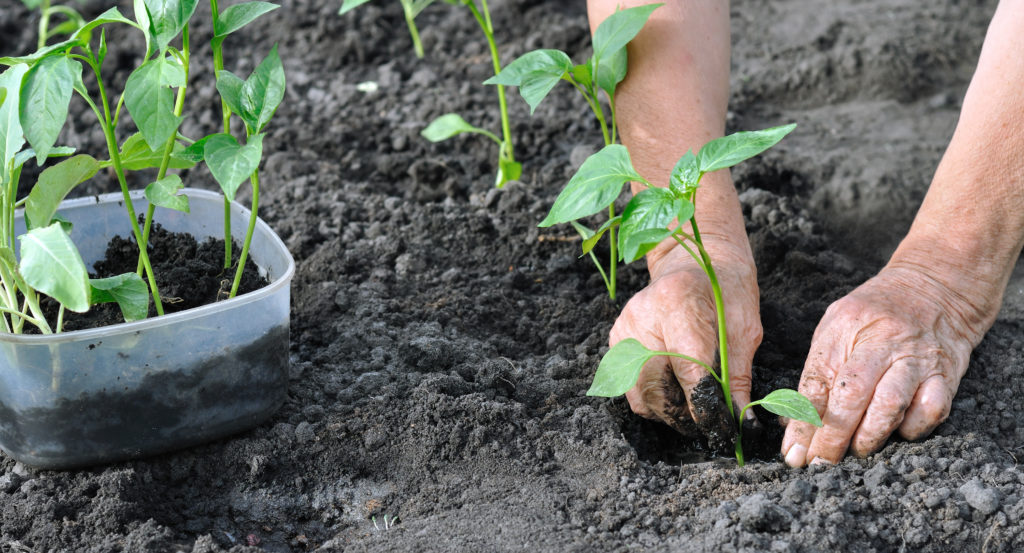
How Pepper Growing Basics
Hot peppers are most easily grown from transplants. Grow hot chili peppers in the warmest, frost-free time of the year.
Start hot pepper seed indoors 8 to 10 weeks before the date you intend to set peppers into the garden.
Peppers can be seeded in the garden or transplanted out 2 to 3 weeks after the last frost in spring after the soil temperature has risen to at least 65°F. Peppers are tender perennials that are grown as annuals. Peppers grow on compact erect bushes 1½ to 2 feet tall. The fruit follows a single flower growing in the angle between the leaf and the stem. Hot peppers can range in length from 1 to 7 inches long and in color from green to red to gold and yellow.Where to plant hot peppers
Grow peppers in full sun in soil that is rich in organic matter, moisture retentive but well draining. Peppers prefer a soil pH of 5.5 to 6.8. Work aged garden compost into beds prior to planting. The optimal soil temperature for peppers is 65°F or warmer.
When to Plant Hot Peppers
Hot peppers grow best in air temperatures of 70° to 95°F. Peppers are most easily grown from transplants. Start seed indoors 6 to 8 weeks before the date you intend to set peppers into the garden. Peppers can be seeded in the garden or transplanted out 2 to 3 weeks after the last frost in spring after the soil temperature has risen to at least 65°F. In temperatures greater than 85°F, peppers may drop their blossoms although set fruit will ripen. Hot peppers tolerate hot weather better than sweet peppers.
Planting and Spacing Hot Peppers
Sow hot pepper seed ½ inch deep, 18 to 24 inches apart. Space rows 24 to 36 inches apart. Sow two seeds to each spot and thin to the most successful seedling. Peppers can be transplanted into the garden when they are 4 to 6 inches tall.
Container-Growing Hot Peppers
Peppers can be grown in a large container. An 8-inch pot will accommodate a single plant. In larger containers, set plants on 12-inch centers. Peppers can be grown indoors. Pepp
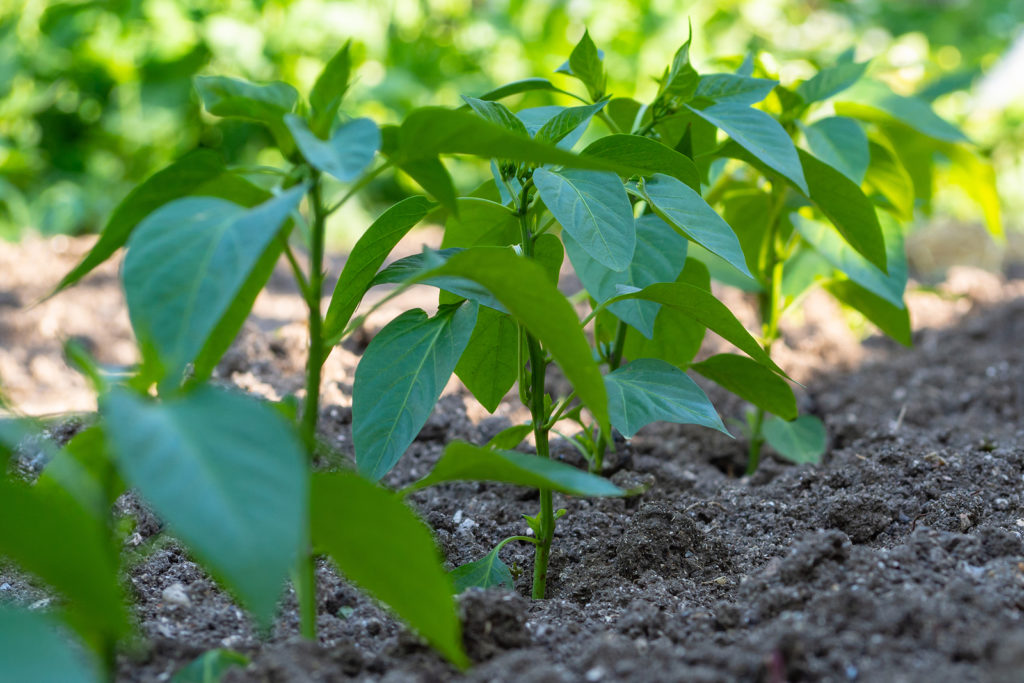
Water and Feeding Hot Peppers
Keep peppers evenly moist but not wet particularly when blossoms appear and fruit begins to form. Soil that goes too dry can result in flower drop. Add aged compost to planting beds before planting and again at midseason. Water more frequently after the fruit forms. Water heavily 4 to 8 hours before harvest to turn hot peppers milder; withhold watering before harvest to make hot peppers hotter.
Hot Pepper Companion Plants
Plant hot peppers with beets, garlic, onions, parsnips, and radishes.
Hot Pepper Care
Keep planting beds well-weeded to avoid competition. Peppers are shallow-rooted, so cultivate around peppers with care. Mulch to keep soil temperature and moisture even.
Feed peppers with phosphorus and potassium-rich fertilizer such as 5-10-10. Avoid high nitrogen fertilizers which will create large leafy plants with few or no fruits. High temperatures and wind can cause flowers to drop and plants not to set fruit.
Plastic mulch can improve pepper yields. Organic compost mulches will reduce weeding and watering, but not fruit yields.
Use shade cloth to protect peppers from sunburn if the temperature exceeds 105°F.

Harvesting Hot Peppers
Hot peppers are ready for harvest in 60 to 95 days after sowing. Pick hot peppers when they have reached full size and their mature color. Sweet peppers can be picked as soon as they reach any edible size; they can be picked and eaten green and do not have to reach mature color. Cut the peppers off the vine with a garden shear. Pulling a pepper away from the plant may cause the plant to come out of the soil.
Storing and Preserving Hot Peppers
Hot peppers will keep in the refrigerator for 1 week or in a cool, dry spot for up to 2 weeks. Roasted and peeled hot peppers will keep in the freezer for up to 6 months. Pickle whole, cooked, and canned hot peppers will keep for up to 2 years.
When frost threatens, pick all of the fruit or pull up the plants and hang them upside down in a dry, cool place until the fruits ripen. You can also clip peppers off the plant–leaving an inch of stem on each pepper–and string them together to make ristras. Hang the ristra in a dry place and allow the peppers to dry. If you live in a humid region, a better way to dry peppers is to place a single layer at the bottom of a grocery bag and clip the bag shut. The peppers will dry–and not be susceptible to mold–in about 10 days.
About Hot Peppers
- Common name. Pepper, hot pepper, chili pepper
- Botanical name. Capsicum frutescens (hot pepper); Capsicum annuum (sweet and hot peppers)
- Origin. New World Tropics
🌶 Peppers Growing Hub
Start here:
- How to Plant and Grow Hot Peppers: A Gardener’s Guide to Spicy Success
- How to Grow Sweet Peppers: A Gardener’s Guide to a Bountiful Harvest
Getting Peppers Started (general prep)
- Seed Starting Peppers: Proven Method for Strong, Healthy Plants
- Soil Preparation for Peppers: The Secret to Strong Roots and Big Harvests
- Best Hot Pepper Varieties to Grow for Salsas, Sauces, and Drying
- Best Sweet Pepper Varieties to Grow
- World’s Hottest Peppers You Can Grow in Your Garden
- The Science of Pepper Heat: Understanding Scoville Units
- Growing Peppers Indoors Under Lights
- Companion Planting with Peppers: Best and Worst Neighbors in the Garden
Planting & Growing Peppers
- When and How to Transplant Pepper Seedlings Outdoors
- 10 Steps to Grow a Bumper Pepper Crops
- How to Grow Hot Peppers in Containers: Tips for Small Spaces
- 7 Tips for Growing Peppers in Pots
- How to Grow Colored Bell Peppers: How to Get Reds, Yellows, and Oranges
- Cross-Breeding Hot Peppers at Home: A Beginner’s Guide
- How to Water & Fertilize Sweet Bell Peppers for Maximum Yield
- Pruning Pepper Plants for Healthier Growth and Bigger Harvests
- Six Tips to Grow Peppers for Flavor
- Pepper Season Extension & Overwintering: How to Keep Plants Producing Longer
Pepper Care & Troubleshooting
- Pepper Pests, Diseases, and Problems—How to Fix Them Naturally
- Caring for Peppers: Mid-Season Problem Cures
- How to Increase the Heat of Hot Peppers Naturally
- Overwintering Pepper Plants Indoors
- How to Overwinter Pepper Plants in Any USDA Zone
Harvesting & Preserving Peppers
- When to Harvest Hot Peppers for Maximum Heat
- How to Harvest Sweet Peppers for the Best Flavor
- How to Preserve Hot Peppers: Drying, Fermenting & Pickling
- How to Ripen Green Peppers Indoors
- Saving Pepper Seeds for Next Year’s Crop
Cooking & Using Peppers
- Preparing and Serving Sweet Peppers – Harvest to Table
- Five Ways to Cook and Serve Chili Peppers
- Stuffed Peppers: Best Varieties for Cooking
- Cooking with Hot Peppers: Flavor & Safety Tips
- How to Handle Hot Peppers Without Burning Your Skin
Books to help you grow:
- Vegetable Garden Almanac & Planner
- Kitchen Garden Grower’s Guide Vegetable Encyclopedia
- Vegetable Garden Grower’s Guide
- Tomato Grower’s Answer Book
Learn how to plant, grow, and harvest your favorite vegetables. Click below for all you need to know.
- Artichoke
- Arugula
- Asparagus
- Beans, Snap
- Beets
- Broad Beans
- Broccoli
- Brussels Sprouts
- Cabbage
- Cantaloupe — Melons
- Cardoon
- Carrots
- Cauliflower
- Celeriac
- Celery
- Chard
- Chayote Squash
- Chickpeas
- Chicory
- Chinese Cabbage
- Collards
- Corn Salad
- Corn, Sweet
- Cresses
- Cucumbers
- Eggplant
- Endive and Escarole
- Fava Beans
- Florence Fennel
- Garbanzo Beans
- Garlic
- Horseradish
- Jerusalem Artichoke
- Kale
- Kohlrabi
- Leeks
- Lettuce
- Lima Beans
- Melons
- Mizuna
- Mustard Greens
- New Zealand Spinach
- Okra
- Onions
- Parsnips
- Peanuts
- Peas
- Peppers
- Potatoes
- Pumpkins
- Radicchio
- Radishes
- Rhubarb
- Rutabaga
- Salsify
- Shallots
- Sorrel
- Southern Peas
- Soybeans
- Spinach
- Squash, Summer
- Squash, Winter
- Sunchokes
- Sweet Potato
- Swiss Chard
- Taro
- Tomatillo
- Tomatoes
- Turnips
- Watermelon
- Zucchini

